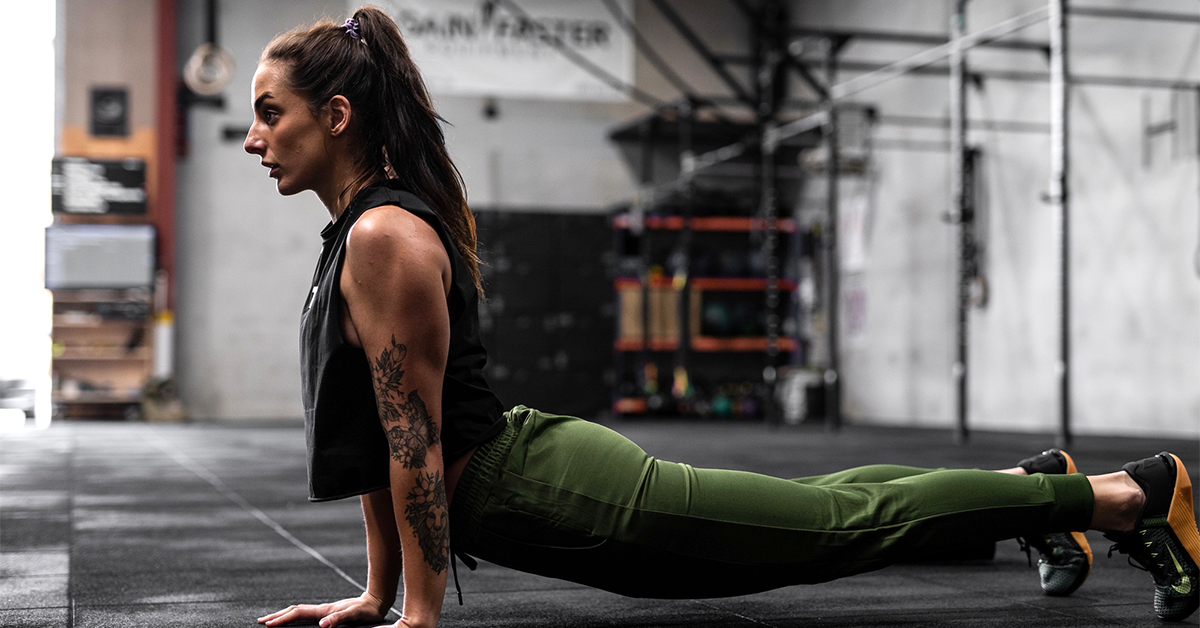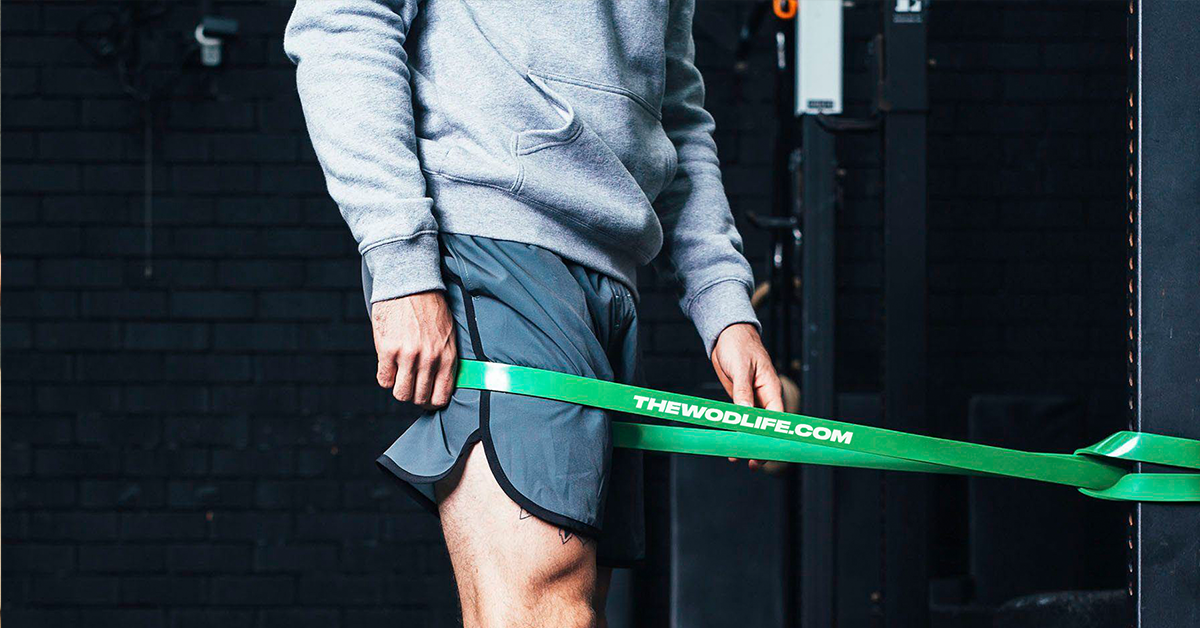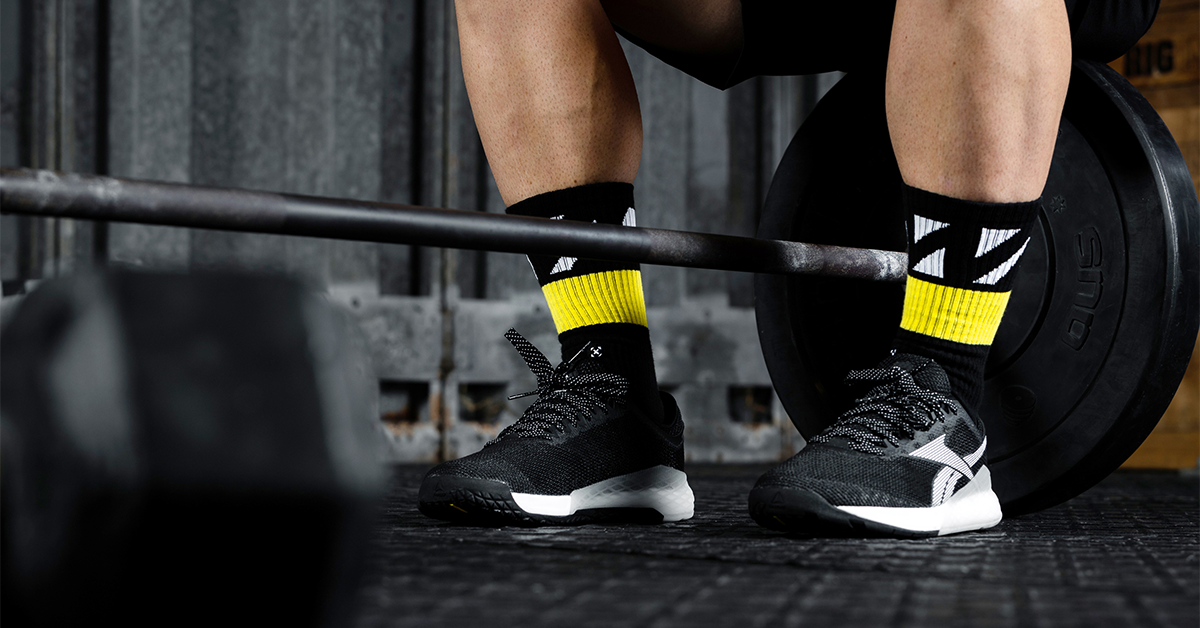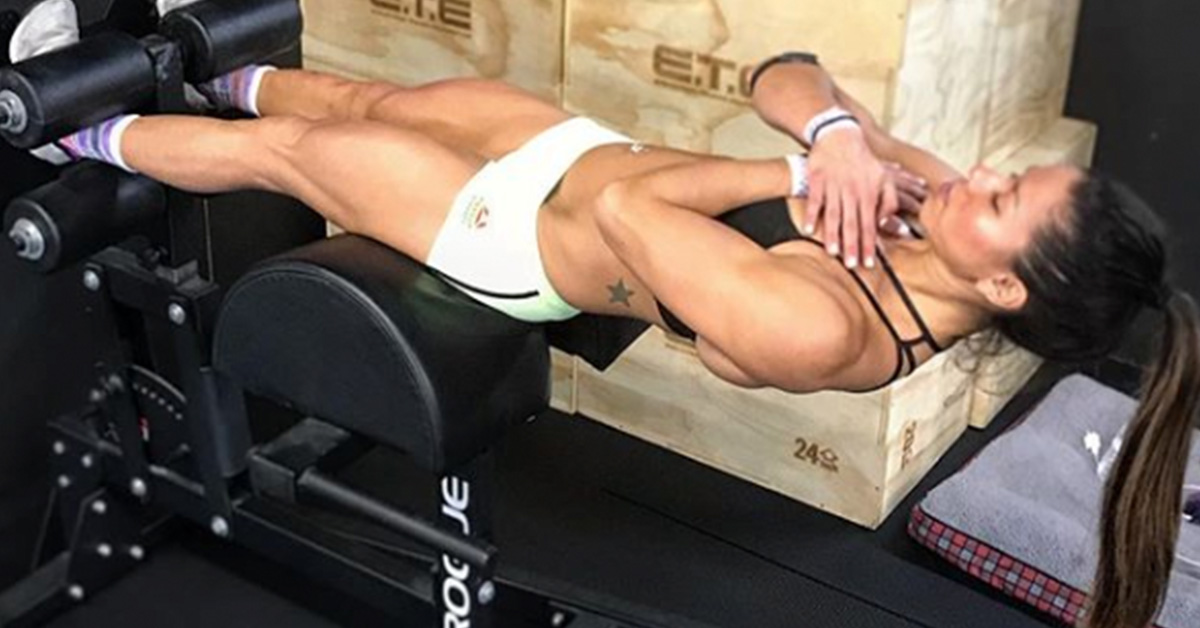If you want an exercise that’s going to leave you so sore tomorrow that it’ll be hard to walk, the glute-ham raise is it. In this blog, we’ll dive into how to do a glute-ham raise, what the benefits and muscles worked are, how you can do a glute-ham raise without equipment, and more. Let’s get moving!
What is a Glute-Ham Raise?
Here’s how to do a glute-ham raise — one of the absolute best hamstring exercises you can do (and one of many exercises you can do on a GHD machine).
Getting in Position
Traditionally, a glute-ham raise has you getting in a glute-ham developer (GHD) machine face down. The middle of your quads should be resting on the leg support pads. (If this isn’t the case, you might need to adjust your GHD machine to make it longer or shorter.) Wedge your ankles between the back pads and either fold your arms across your chest or clasp your hands behind your neck.
When you fold at the hips, you should be able to lower your chest completely. (If your quads are properly aligned with the leg pads, you’re probably good to go here!)
You start with your body bent at a 90-degree angle. Your shins should be parallel to the floor. The rest of your body should be upright, perpendicular.
Execution
Slowly lower your torso until it’s parallel to the floor. Then, engaging particularly your glutes and hamstrings, you bring your torso back up to the upright starting position. That completes one rep.
This is what it looks like.
How Do You Do a Glute-Ham Raise Without Equipment?
This is a surefire way to blast your hammies, but not everyone has access to a GHD machine — and that’s okay. How can you do a glute-ham raise without the machine? There are two main glute-ham raise alternatives.
Really, all you need is something to anchor your feet/ankles. If you have a barbell and rack set-up, you can put the bar in the J-hooks directly on the ground. Be sure to load it with heavy plates. This will hold your feet in place — like this:
Don’t have the necessary equipment? No problem! Simply ask a buddy to hold your ankles for you as you do them on the floor. This way, you can do a glute-ham raise at home, at the gym — anywhere you want.
What Muscles Does a Glute-Ham Raise Work?
The answer is right in the name of the exercise: your glutes and your hamstrings. However, you’ll also feel the burn in your calves, as well as your lower and upper back.
Shop Now
More Glute-Ham Raise Benefits
Aside from making your hamstrings burn with the fire of a thousand suns, this movement provides a number of other benefits. Because it especially targets parts of your posterior chain, it’s going to benefit both your squats and deadlifts, which also heavily rely on your posterior chain.
The slow descent of the glute-ham raise and the explosive upward return to the starting position translate to other movements as well. This is an excellent supplementary exercise to improve your vertical jump, running/sprinting, and especially the Olympic lifts.
Lastly, because it’s a low-impact exercise, it’s great for putting your body to work without putting stress on your back. You’re still building strength but without carrying a loaded barbell on your shoulders (like you do in a squat), or pulling it from the ground (like you do in a deadlift).
How to Scale the Movement
Let’s talk about how you can make the glute-ham raise easier or harder.
Important note: If this movement is new to you, you will most likely need to scale it! It’s a very challenging exercise — don’t expect yourself to be able to perform it Rx’d right off the bat. Baby steps.
To Make it Easier
- Do the down-phase (where you lower your torso), and then “crawl” back to the starting position by pushing up on the leg pads with your hands.
- Shorten the down-phase. Instead of lowering your torso until it’s parallel to the floor, try going halfway and then returning to the starting position.
- Stick your butt out so that you’re folding slightly at the hips. This redistributes your weight so that the movement feels slightly easier.
To Make it More Challenging
There are all sorts of ways to do this!
- Hold a plate, dumbbell, kettlebell, or weighted ball at your chest.
- Hold a small weight behind your head.
- Loop a band around the back of your neck.
- Wear a weighted vest.
- Hold a barbell in the front rack or back position.
Any way you cut it, if you add weight, you’re going to make the movement more challenging. Just be sure to master it with your own body’s weight before kicking it up a notch.
How Many Sets/Reps Should You Do of the Glute-Ham Raise?
To start off, we strongly suggest that you go with a more modest rep scheme. The reason for this is that even if you don’t notice it at the time, you will very likely be sore the next couple of days. While there’s nothing wrong with soreness, taking this too far is only going to backfire.
Consider something like 3-5 sets of 3-5 reps. As you get comfortable with the movement and build more strength, you can get a little more creative with these numbers.
You’re now an expert when it comes to how to do a glute-ham raise, its benefits, variations, alternatives, muscles worked, and scaling options. Now, warm up those hammies and get to work!

















